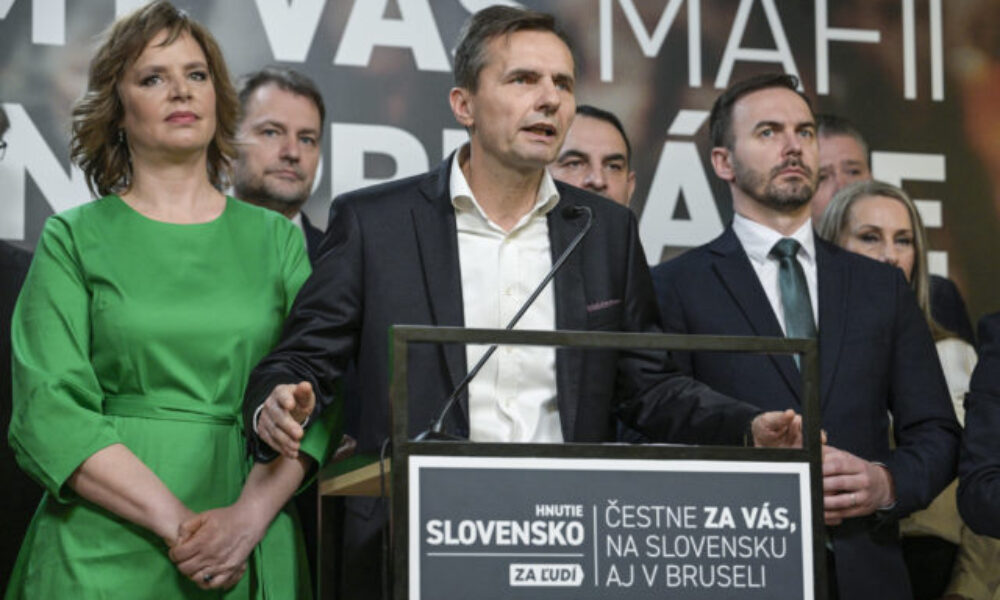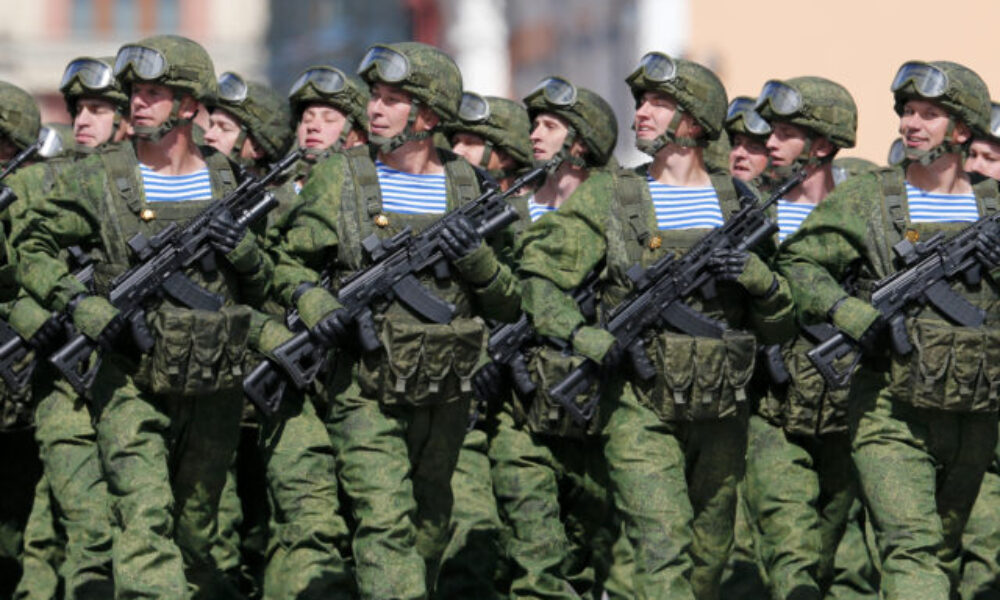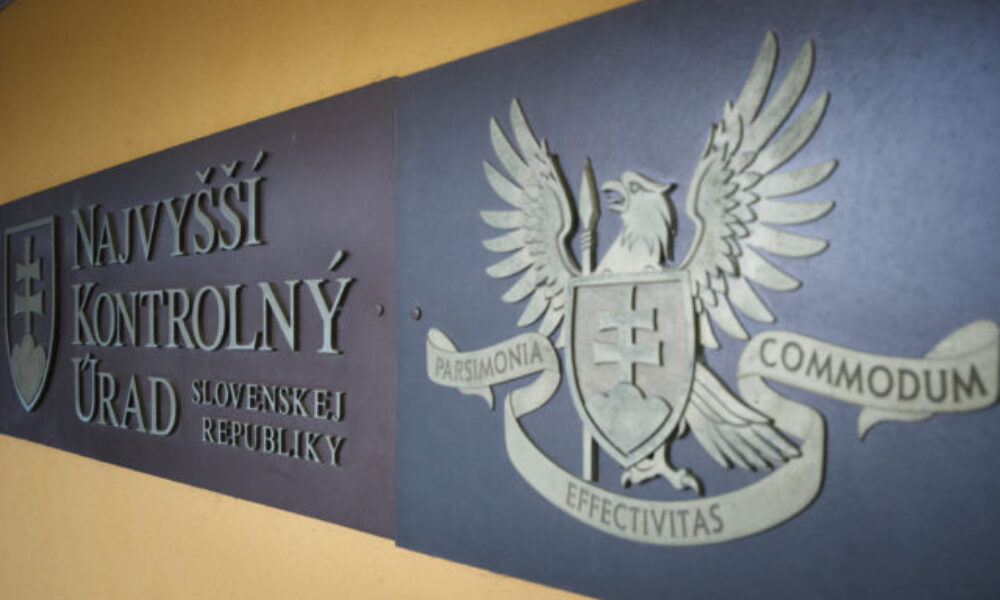
In the intricate, high-stakes arena of Central Asian geopolitics, every diplomatic gesture is intensely scrutinized. Kazakhstan, often described as the region’s economic anchor, finds itself at the epicenter of a new global balancing act. This complexity was thrown into sharp relief by the recent, high-profile visit of Kazakhstan’s President Kassym-Jomart Tokayev to Moscow in November 2025.
What made this visit so compelling was its timing: it occurred less than a week after President Tokayev was hosted by Donald Trump at the highly symbolic C5+1 Summit in Washington. Tokayev’s immediate pivot from securing massive Western investment to solidifying a comprehensive strategic partnership with Russia demonstrates the challenging, pragmatic course Central Asian leaders must navigate in an increasingly multipolar world.
President Tokayev’s arrival in Moscow marked a pivotal moment, characterized by exceptional diplomatic attention—a state visit, the highest form of diplomatic regard states reserve for special occasions.
The ceremony itself was rich with symbolism. Upon crossing Russia’s state border, the presidential aircraft was met and escorted by Russian Su-35 fighters until its landing at Moscow airport. This military escort underscored Russia’s singular focus and strategic importance to its relationship with Kazakhstan. As the President’s motorcade traveled through Moscow, banners proclaiming a welcome to His Excellency the President of Kazakhstan flashed on enormous screens in both Kazakh and Russian, setting a grand, ceremonial tone. The atmosphere surrounding the visit was carefully curated to be warm and unmistakably friendly.
During his two-day visit, Tokayev held talks with his Russian counterpart, Vladimir Putin, focusing on strategic partnership and strengthening ties across political, trade, economic, cultural, and humanitarian spheres. Tokayev emphasized that relations between the two nations have a “decisive influence on many fundamental processes in Eurasia” and are built on strategic partnership and alliance, largely free of serious disagreements.
The main practical outcome expected from the discussions was the signing of a declaration formalizing the transition of relations between Moscow and Astana to the level of a comprehensive strategic partnership. The discussions were detailed, with Putin planning to inform Tokayev about the latest developments regarding the conflict zone and the settlement in Ukraine. Conversely, the Kremlin anticipated Tokayev would share details from his recent trip to the C5+1 Summit in Washington.
The cordiality extended beyond formal meetings. The two presidents spent over two and a half hours in an informal, tête-à-tête setting, even taking off their jackets, which culminated in Putin inviting Tokayev for “tea or coffee” afterward. This extended, non-public conversation underscored a deep, trusting, and warm atmosphere between the leaders. For Kazakhstan, the visit was not just an adherence to diplomatic custom, but an act of pragmatism, serving as a “guideline” in a highly complex geopolitical environment.
Tokayev’s visit to Moscow gains its deepest meaning when viewed against the backdrop of recent, aggressive US engagement in Central Asia. The American strategy, which has changed tactics but not core intent since the time of former US Vice President Dick Cheney, seeks to secure Western access to the region’s vast resources and break Russia’s control over energy transportation.
The modern US strategy involves a coordinated three-pronged approach aimed at undermining the rising BRICS collective and securing Central Asia in the American sphere.
1. Financial Digitalization and Dependency: The US has actively sought to create financial dependency in Russia and China’s backyard. This move was symbolized by the pardon of convicted money launderer Changpeng Zhao (CZ) in October 2025. CZ, the founder of Binance, immediately pivoted East, praising Kyrgyzstan’s “strategic location” and quickly establishing operations and deals in Uzbekistan (January 2025) and Kazakhstan (2022). The goal is to digitize Central Asia, potentially creating financial reliance on US-influenced crypto frameworks, such as a possible digital som in Kyrgyzstan.
2. Acquisition of Critical Minerals and Investment: The C5+1 Summit, hosted by President Trump on November 6, 2025, brought together the leaders of all five Central Asian nations (Kazakhstan, Kyrgyzstan, Tajikistan, Turkmenistan, and Uzbekistan). This summit was driven by the strategic acquisition of critical minerals—including uranium, copper, gold, rare earths, and Tajikistan’s antimony (where it ranks second globally in production). Kazakhstan, a massive producer of uranium (40% of the world’s supply), secured $17 billion in new deals, adding to the over $100 billion it has already received in total US investment. Uzbekistan pledged a staggering $100 billion in US investments over the next decade. The US is actively consolidating ties, pulling Kazakhstan toward its sphere of influence.
3. The Corridor to Bypass BRICS: The most overt strategic maneuver is the creation of the Trump Route for International Peace and Prosperity (TRIPP), established via a peace deal mediated between Armenia and Azerbaijan in August 2025. This Zangezur Corridor links Azerbaijan’s mainland to its exclave through Armenia. The US secured exclusive development rights for 99 years, intending to sublease them for rail, pipelines, and roads. US officials admitted the primary goal was to reduce the influence of Iran, Russia, and China, allowing energy and minerals to bypass these BRICS members.
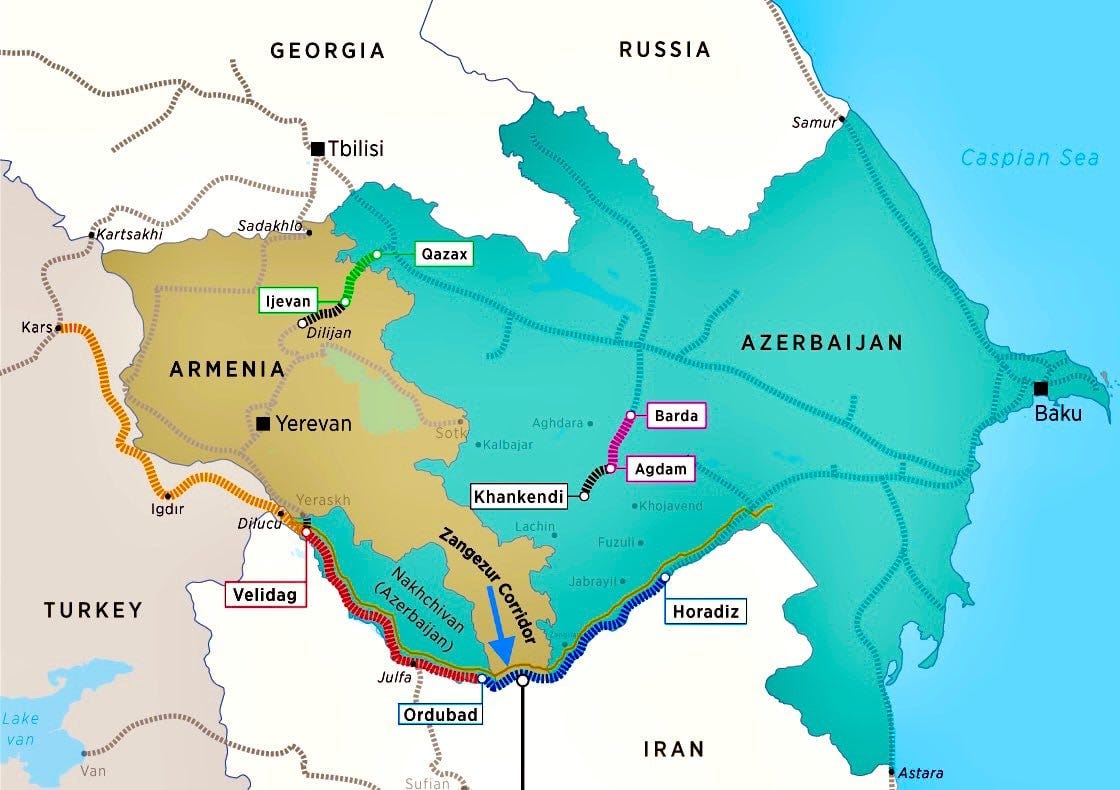
The Central Asian nations, including Kazakhstan, now face an incredibly difficult choice. They are deeply interconnected with Russia (Commonwealth of Independent States) and China (Shanghai Cooperation Organization and Belt and Road Initiative). They are trying to execute a multivector policy—accepting Western money while maintaining Eastern partnerships. However, proximity to anti-BRICS projects like TRIPP carries the risk of internal destabilization.
Despite the focused US strategy to fracture regional cooperation and protect the dollar’s status (such as the GENIUS Act, which forces stablecoins to back themselves only with US dollars or short-term Treasuries, creating artificial demand for US debt), the core structure of the BRICS nations remains robust and collaborative.
BRICS is not “fading out fast,” as some claim. The numbers demonstrate its growing strength:
-
Economic Power: BRICS controls 36% of global GDP in Purchasing Power Parity (PPP) terms, exceeding the G7.
-
Demographic Reach: The eleven member nations (Brazil, Russia, India, China, South Africa, plus Egypt, Ethiopia, Iran, UAE, and Indonesia) represent 46% of the world’s population—nearly four billion people.
-
Resource Control: They possess 32% of natural gas reserves and control 40% of global oil production. Iran’s membership in 2024 is particularly significant, as it holds the second-largest natural gas reserves globally.
-
Financial Autonomy: BRICS nations hold more foreign exchange reserves than the US and Europe combined and are actively constructing a post-dollar financial system. China and Russia trade primarily in yuan and rubles, and India buys oil from Russia and Iran using rupees. The dollar’s share of global reserves has dropped significantly, confirming this shift.
The members of the BRICS collective are not abandoning their collaboration despite the allure of economic relationships with the US. They are simultaneously building a strategic counter-response to US corridor projects.
Infrastructure and Connectivity: Russia and Iran are prioritizing the expansion of the International North-South Transport Corridor (NSTC). A recent achievement in this effort was the arrival of the first Russian freight train to Iran via Kazakhstan and Turkmenistan, completing the 9,000-kilometer journey in just twelve days. Furthermore, Russia and Iran formed a joint port consortium in Makhachkala, targeting five million tonnes of annual cargo across the Caspian Sea.
Regional Cooperation: The collaboration extends beyond high-level infrastructure. For example, Iran, citing historical, cultural, and linguistic bonds, has expressed readiness to transfer its aviation technical knowledge and operational experience to Tajikistan. The areas of cooperation cover aircraft maintenance, parts production, and human resource training. This focus on practical cooperation and mutual support among Persian-speaking nations reflects the broader BRICS ethos of synergy.
These collective actions—both financial and infrastructural—show that while Central Asian nations like Kazakhstan seek to balance their exposure by taking Western investment, they remain fundamentally tied to the BRICS heartland through geography, existing partnerships (SCO, Eurasian Economic Union), and vital energy and trade routes. Russia and Iran are not simply reacting to the US strategy; they are actively building their own enduring connectivity.
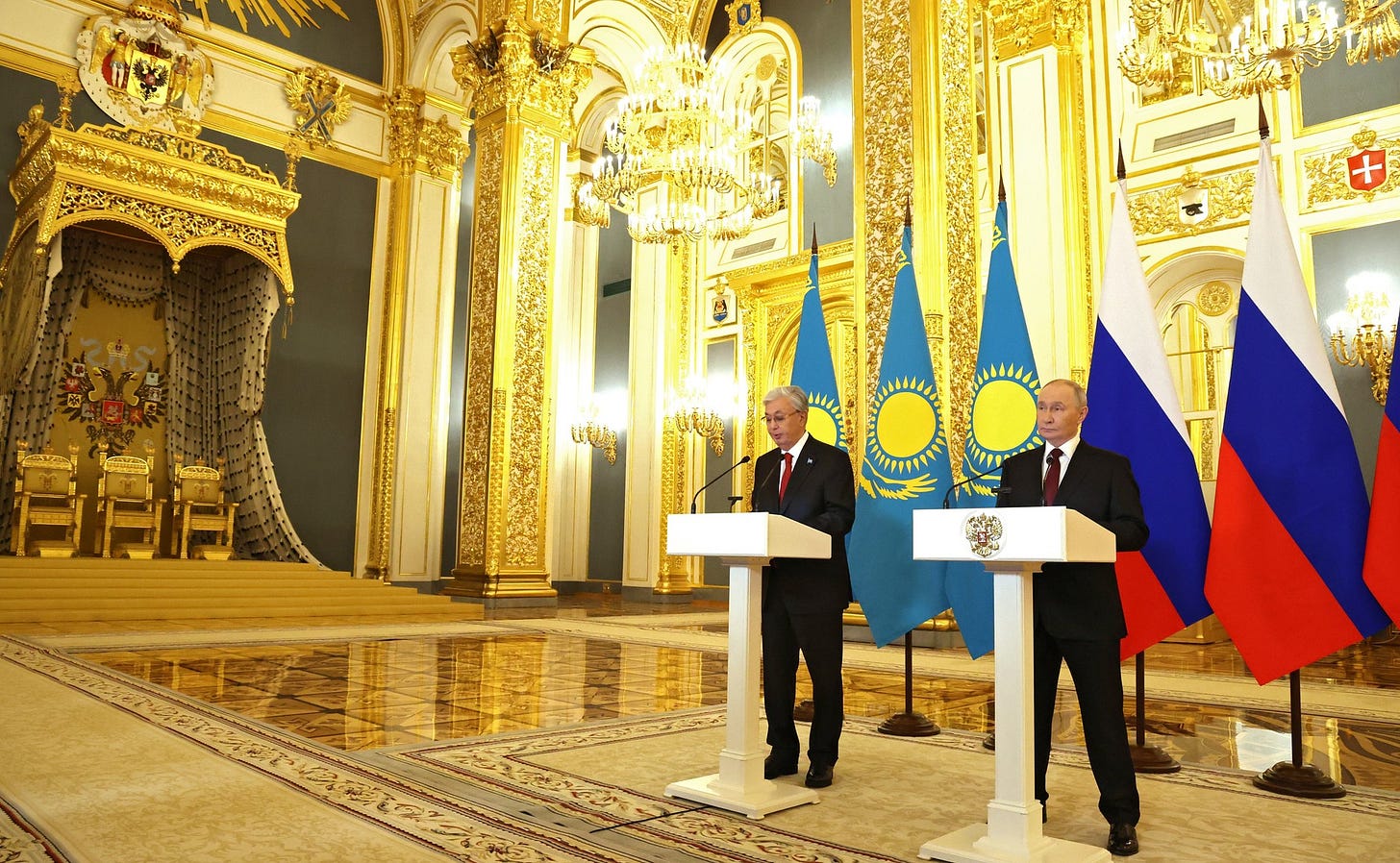
Tokayev’s swift succession of visits—Washington, then Moscow—epitomizes the geopolitical reality facing Central Asia today. The region is caught in a sophisticated new Great Game where infrastructure and financial systems are used as chess pieces.
Kazakhstan’s state visit to Moscow, solidifying a comprehensive strategic partnership right after securing billions in US deals, confirms a pragmatic approach: Western money is welcome, but Eastern security and enduring alliances remain essential. The fact that Tokayev received the highest diplomatic honors in Moscow and reaffirmed the strength of the bilateral relationship shows that, even as the US attempts to lure countries away, the BRICS core and its deeply embedded partnerships are not easily fractured.
Central Asian leaders are now skilled navigators, attempting to keep their ships afloat between two rising tides. Tokayev’s Moscow visit was a decisive statement that, while engaging with the West for economic gain, Kazakhstan recognizes that its geopolitical stability is tied to its Eastern partners, who are steadily working to deepen their integration and financial autonomy. The map of power is being redrawn, and countries in the middle are proving they are not mere pawns, but players determined to survive this complex new order.
The current geopolitical situation for Central Asia is akin to navigating a narrow strait where the waters on one side represent powerful, deep-pocketed Western markets and the waters on the other represent long-standing, infrastructural, and strategic Eastern alliances. Tokayev’s visit demonstrated his ability to successfully balance the rudder, acknowledging the necessity of both shores to maintain his nation’s forward momentum.



